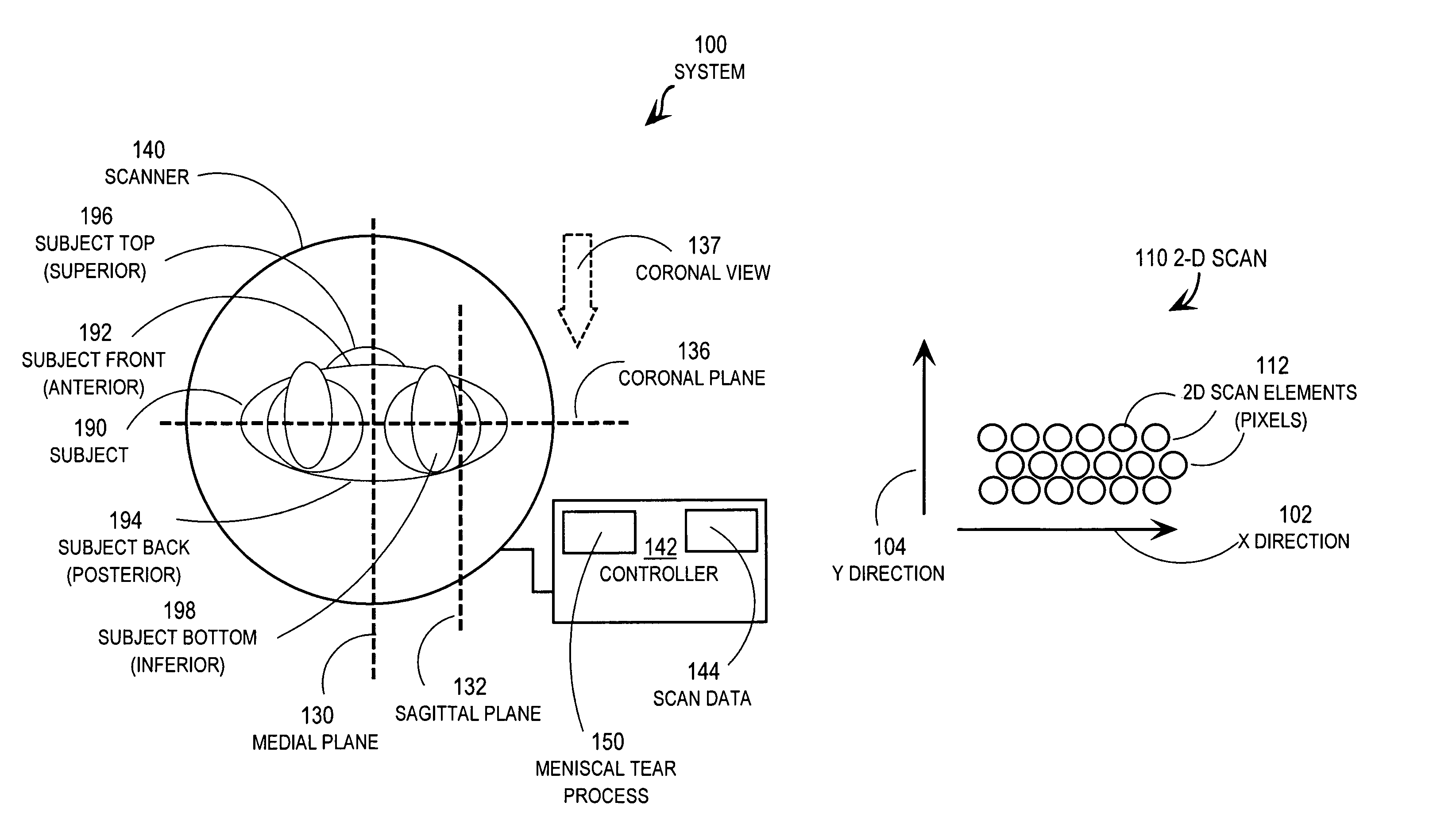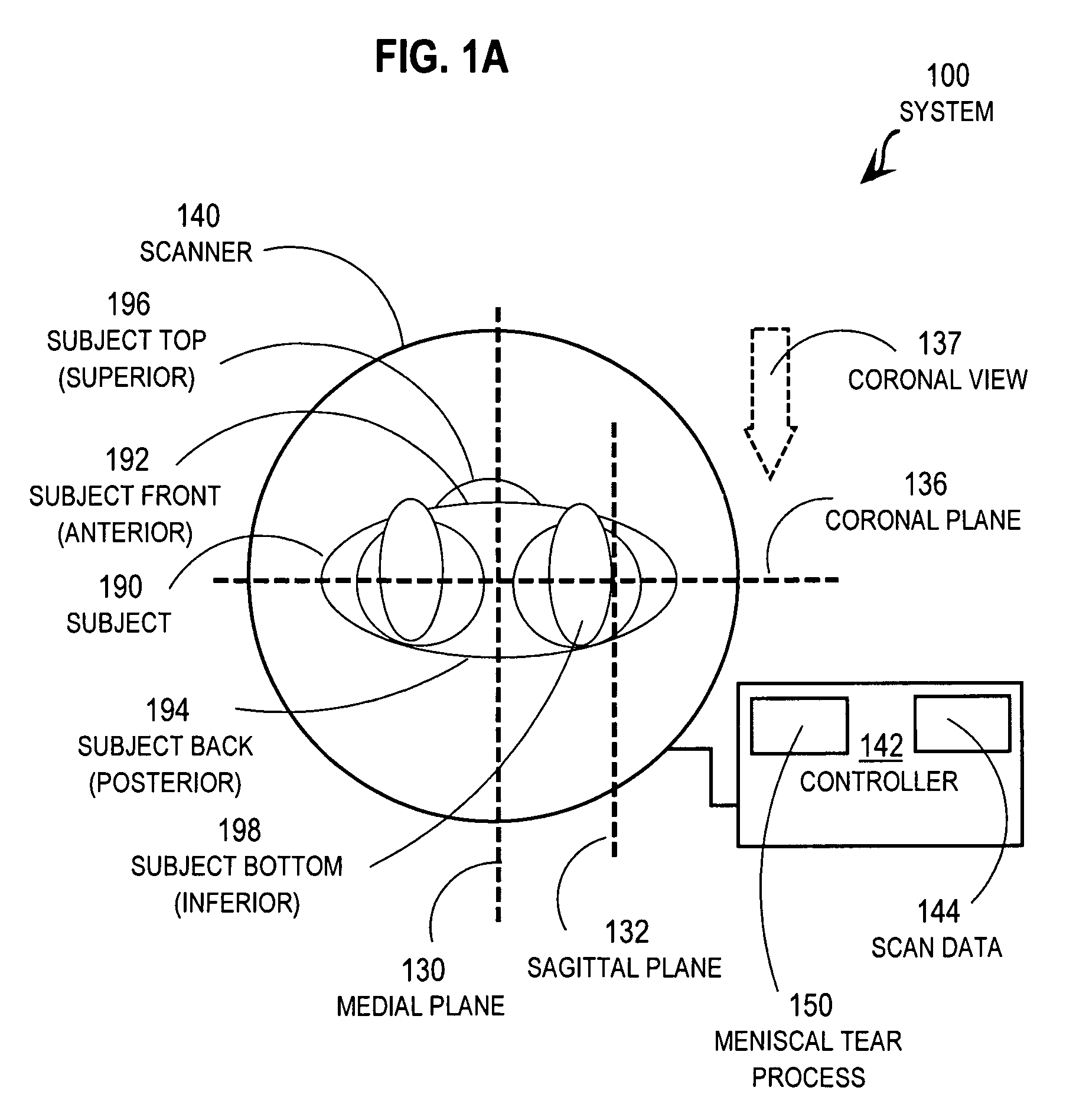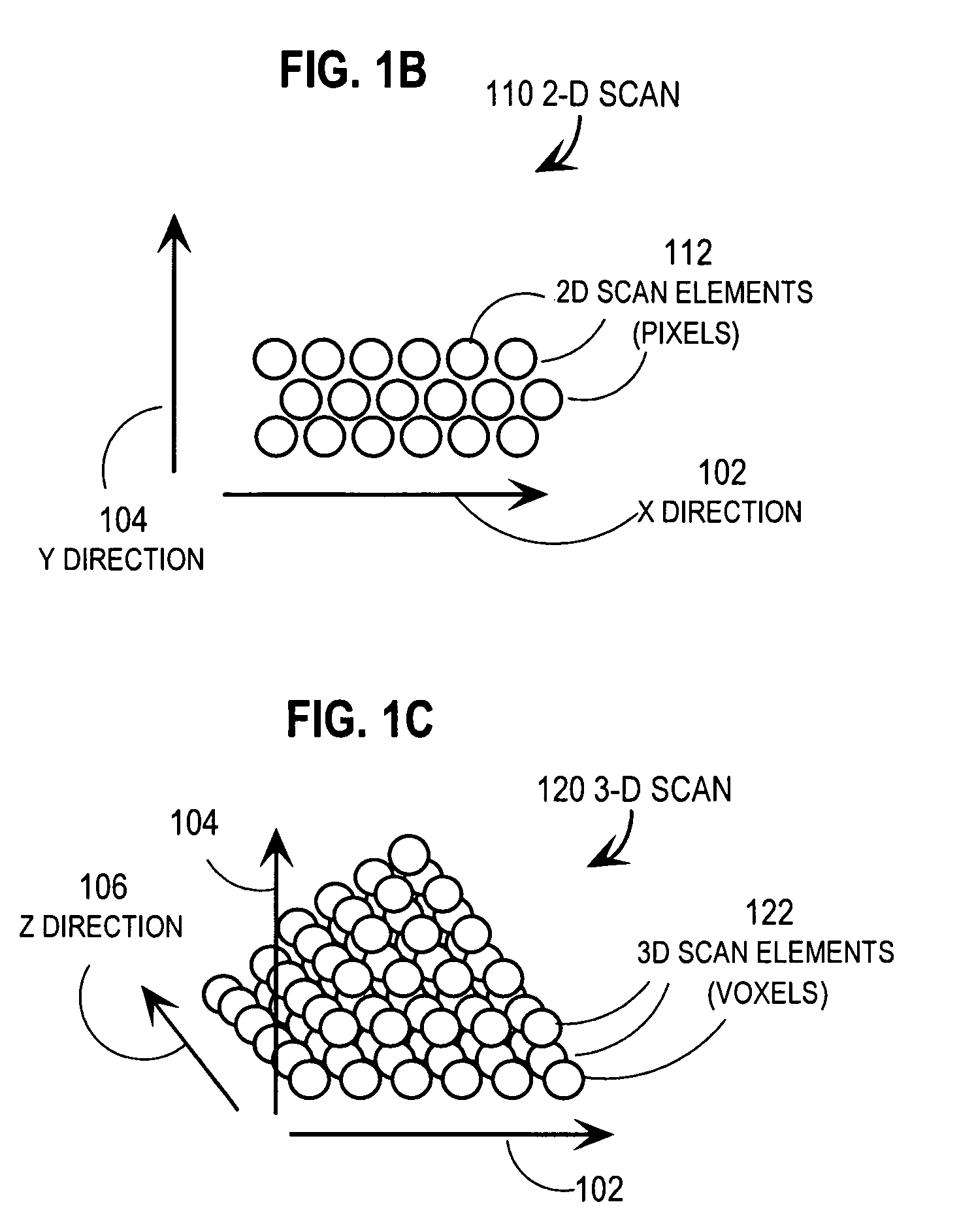Detecting meniscal tears in non-invasive scans
a non-invasive scan and meniscus technology, applied in the field of interpretation of non-invasive scans, can solve the problems of meniscal tear, affecting the mechanical integrity of the entire knee joint, and few published studies have focused on the means of enhancing and refinement of detection of meniscal tears
- Summary
- Abstract
- Description
- Claims
- Application Information
AI Technical Summary
Benefits of technology
Problems solved by technology
Method used
Image
Examples
Embodiment Construction
[0002]This invention was made in part with US Government support from the Department of Veterans Affairs (VA). The Government has certain rights in the invention.
BACKGROUND OF THE INVENTION
[0003]1. Field of the Invention
[0004]The present invention relates to interpreting non-invasive scans of a knee of a subject to determine properties of a meniscus of the knee, and, in particular, to determining one or more properties of the meniscus, such as tears, without human intervention.
[0005]2. Description of the Related Art
[0006]The meniscus is an important part of the knee support mechanism. It includes 2 large C-shaped (medial side) and O-shaped (lateral side) structures and acts as a cushion between the femur and the tibia. Although the meniscus is highly tolerant to axial forces, it is susceptible to rotational forces, which may result in meniscal tearing. If a tear originating in the periphery of the meniscus is left untreated, it propagates easily and may affect the mechanical integri...
PUM
 Login to View More
Login to View More Abstract
Description
Claims
Application Information
 Login to View More
Login to View More - R&D
- Intellectual Property
- Life Sciences
- Materials
- Tech Scout
- Unparalleled Data Quality
- Higher Quality Content
- 60% Fewer Hallucinations
Browse by: Latest US Patents, China's latest patents, Technical Efficacy Thesaurus, Application Domain, Technology Topic, Popular Technical Reports.
© 2025 PatSnap. All rights reserved.Legal|Privacy policy|Modern Slavery Act Transparency Statement|Sitemap|About US| Contact US: help@patsnap.com



